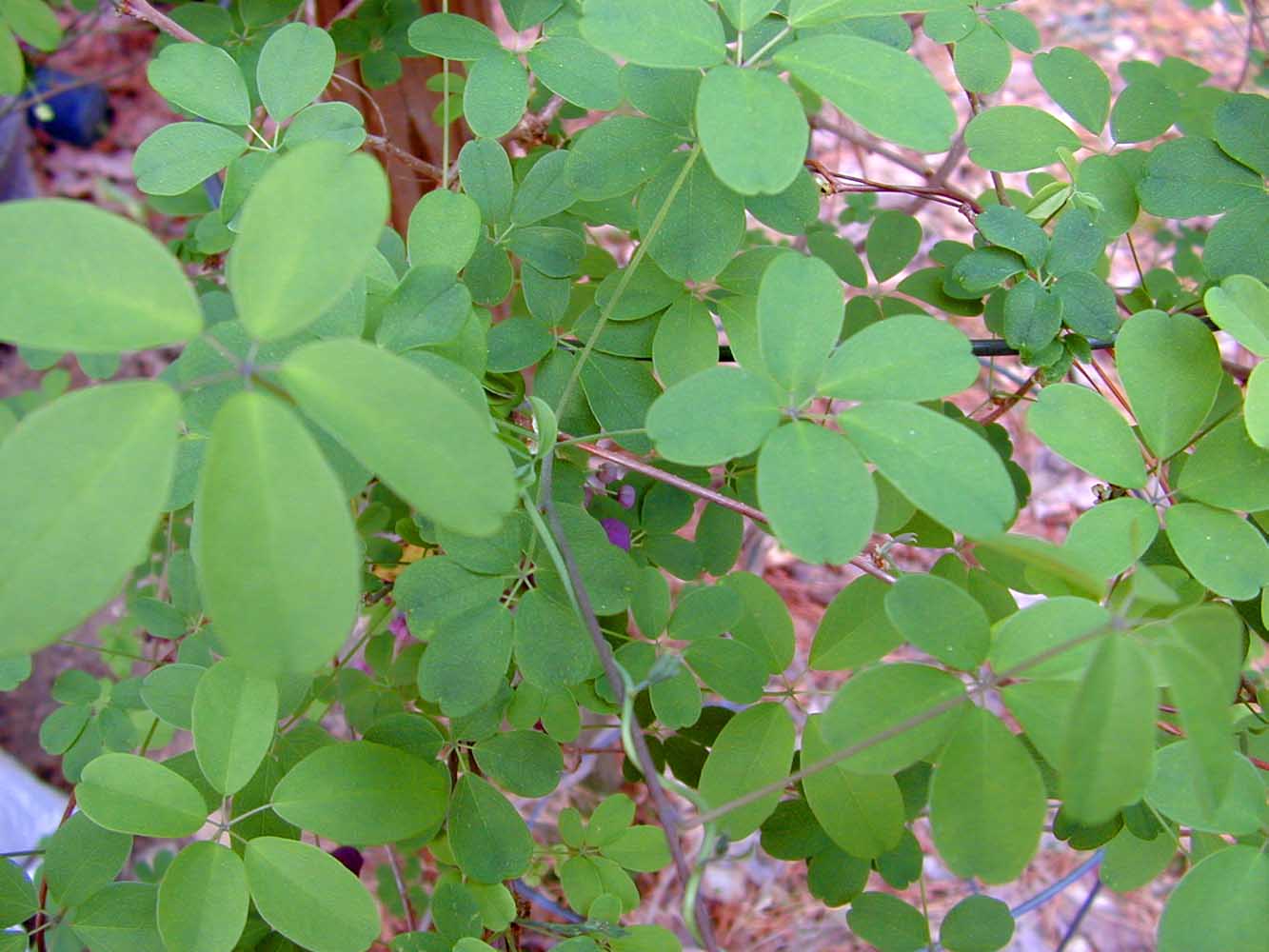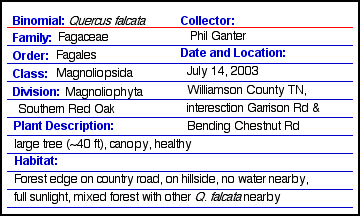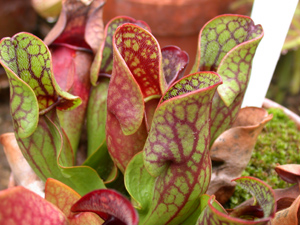|

|
BIO 432
Field Botany
Phil
Ganter
320 Harned Hall
963-5782 |
| Akebia quinata,
the chocolate vine
has leaves that are palmately compound (the plant
is named for flower color, not for its flavor) and is an invader in
North America that is native to Asia. It belongs to a mostly tropical
family with the unlikely name Lardizabalaceae. There is no common
name for the family in English. |
Mounting Your Specimens
Email me
Back
to:
Why
this note?
This is an important
step, as the mounting must display the important features of the plant so
that its identity can be checked. If the underside of the leaves are supposed
to be hairy, this must be displayed in the mount. When you hand in the specimen,
we will go over the identification and will use the mounted specimen for this.
You will need:
Good quality 11 x 14 inch white paper
is the minimum size. Larger will work better. The paper should
be heavy grade and stiff.
The paper should
support the specimen, so that you can pick up the mount and the paper
will
not bend under the specimen's weight
Clear tape or Clear Glue (be sure that
the glue is flexible when dry - many are not).
Index cards or similar for the plant
labels.
Mounting:
If the paper used as blotting paper is
not too damaged, soiled, or wrinkled from the drying process, it can be used
here.
Carefully remove the specimen from the
press and position it on the paper. Look at the characteristics you used to
identify (these should have been recorded in your notebook) it and be sure
these are visible on the mount. Also be sure that there is room for the label
card.
The label card should have the scientific
binomial, complete classification (Kingdom, etc.). If the scheme you find
has super- and sub- groups, include them. Also include your name, the common
name of the plant, the collecting date and location. In addition, indicate
the notebook page that contains the additional information you collected when
you collected the specimen.
The notebook should be presented whenever
handing in specimens. Remember that you don't have to wait until the last
day to hand them in. Just bring them to me with the notebook and we will go
over the specimen to see if it is presented correctly, check the identification,
and enter it onto your list of identified specimens. At the end of the course,
I may ask to keep the notebook or a copy of it. A description of the notebook
is found on the collection page.
Herbs and
Grasses
Use short pieces
of tape to fix the roots and stem to the paper. If the arrangement of leaves
on the stem or type of root system is important for identification, be sure
it can be easily seen.
The leaves can be fixed to
the paper with either glue or tape. Glue works best for broad leaves and
tape for narrow leaves. Be sure some leaves have the upper side showing
and some have the lower side.
Inflorescences must be fixed
to the paper (either glue or tape) so that individual flowers can be seen
and, if some characteristics of the flowers are important for identification,
be sure they can be seen.
Fruits are usually best affixed
with glue. If you have cut open some before drying, then include the cut
away section and one where you can see the outside of the fruit.
Glue or tape the id card to
the paper.
Trees
Use tape to
fix the stems and twigs to the paper. For the twigs with leaves are
attached, be sure the
arrangement of the leaves is easy to see.
Leaves should
be glued or taped to the paper. If different shapes or sizes are present
(some trees
are notorious for differences in shape and size), the leaves should include
examples that illustrate the variation. Be sure both upper and lower
sides
are visible.
Inflorescences and fruits should
be treated as for herbs and grasses.
Glue or tape the id card to
the paper.
Label
Here is an example of an index
card filled out with the necessary collection information. Notice that I had
to take notes in the field in order to complete it.

For
a look at some well preserved and some not-so-well preserved plants, go
to the Examples
page

A pitcher plant also has unusual leaves. The
leaf edges have sealed from the base, forming a tube that is filled with
a complex liquid that digests animals that fall into it. However, there
is an entire community of organisms that have learned to survive and thrive
in this environment, which becomes a miniature ecosystem. This one is
Sarracenia purpurea. There are several pitcher plant species,
some in Tennessee. All here are protected (don't collect them). They live
in the wet, acidic soils of swamps, where mineral nutrients and organic
nitrogen are hard to obtain.
Go back to the Preservation page
Go forward to the Identification
page
Last
updated July 9,
2013http://tn.gov/environment/na/nhp.shtmlhttp://tn.gov/environment/na/nhp.shtmlhttp://tn.gov/environment/na/nhp.shtmlhttp://environment-online.state.tn.us:8080/pls/enf_reports/f?p=9014:3:1269984390569501:::::http://environment-online.state.tn.us:8080/pls/enf_reports/f?p=9014:3:1269984390569501:::::http://environment-online.state.tn.us:8080/pls/enf_reports/f?p=9014:3:1269984390569501:::::http://environment-online.state.tn.us:8080/pls/enf_reports/f?p=9014:3:1269984390569501:::::


